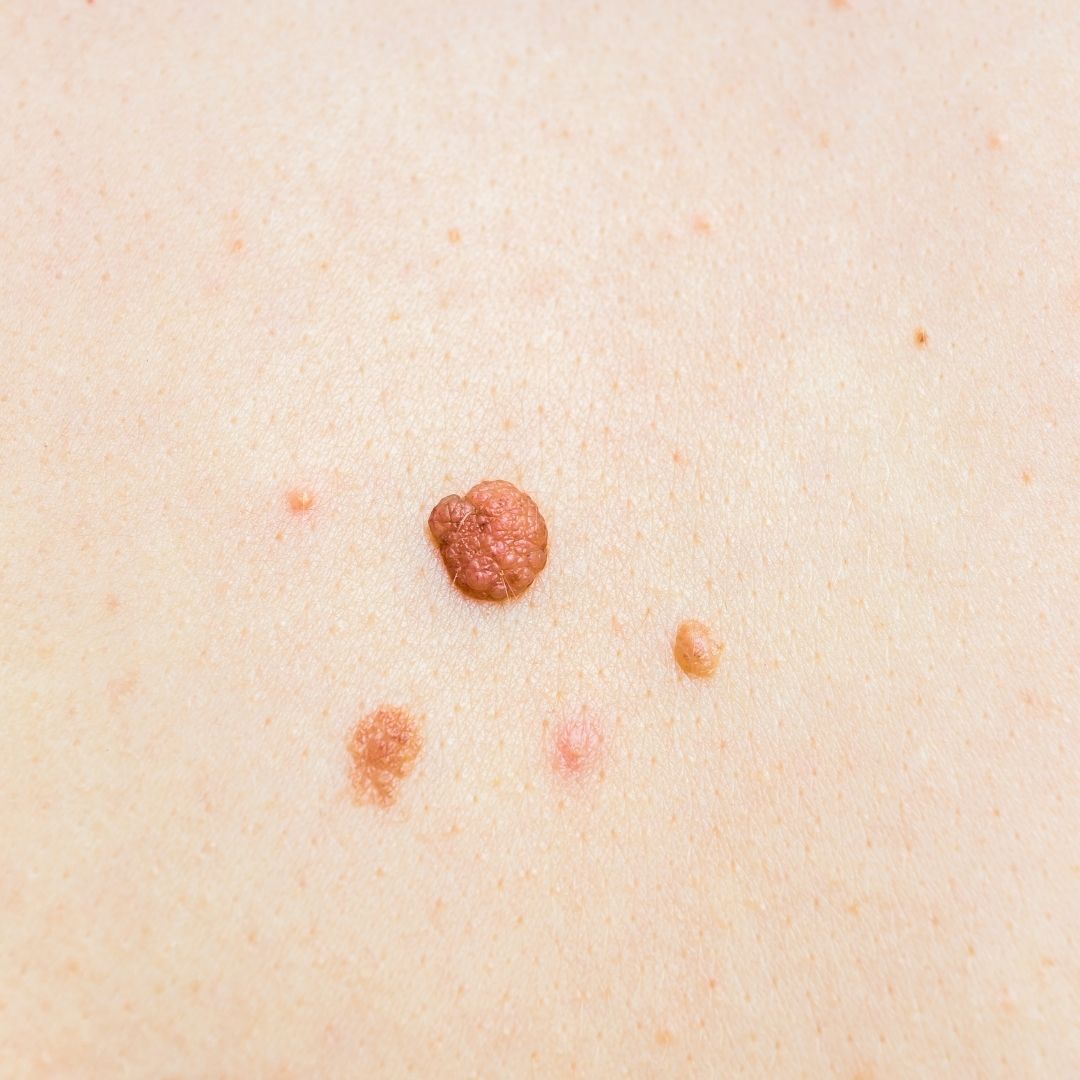Most of us are aware of new blemishes that appear on our skin. Whether we see a pimple, blackhead and even a mole that seems normal, we don’t think much of it. However, have you ever noticed a piece of skin that is hanging from your armpit or stomach? Before you find yourself panicking, know that it’s probably a very normal occurrence called a “skin tag.”
Skin tags usually appear in the parts of the body where there is evidence of skin folds or creases. There is no definite cause, and it just appears as the person ages. However, it is important to know that skin tags can be hereditary and are more likely to appear on those who may be overweight. If your parents have had skin tags, you are more prone to experiencing a skin tag in your lifetime. The good news? They’re harmless.
All of that said, how do you know if you’re dealing with a skin tag, or something else?
Skin Tags vs. Moles
First off, it’s important to know that skin tags and moles are not the same thing. While both are typically benign growths on your skin, there are also factors that make them quite different.
Skin tags are fleshy overgrowths that appear on your neck, armpits, and under the breast. While anyone can experience a skin tag, they do appear more likely on someone who is obese that experiences more friction with skin overlapping and becoming irritated. They tend to be similar in color to your skin and shouldn’t cause any reason to be worried.
Moles are also mostly benign and harmless but need to be watched more closely

than skin tags. For the most part, moles tend to be black or brown and are round and flat in shape. Moles can show up as early as 3 years old but tend to be a result of a lot of sun exposure, which is why it’s important to pay attention to your skin. If a mole turns colors or morphs into a different asymmetrical shape, get it checked out by your doctor.
Skin Tags vs. Warts
You now know the difference between a skin tag and mole, but how can you distinguish between a wart and skin tag? Both warts and skin tags are colorless and appear as the same color of the skin in which the appeared. So, what is the difference?
Skin tags can be found at the surface of your skin, hanging on like a tag, while warts are thick, scaly and deep rooted into your skin. Warts are also a virus and are contagious, while skin tags are not.
The easiest way to tell the difference between the two is by the hardness of the skin and if it’s on the surface. If you do find that it’s a wart, be sure to talk to your doctor to get it removed immediately before your spread to someone else or other parts of your body.
Skin Cancer
So, what about cancer? Naturally, if you never have had a skin tag, you might be wondering if you have skin cancer. Fortunately, skin tags are not an indication of cancer. However, it is important to be aware of any changes on your skin that cause you any concern so that you can alert your doctor.
Melanoma is a type of skin cancer that can be deadly, so it’s important to be attentive to any changes on your skin that suddenly appear. Whether that’s a change in an existing mole or a development of a new pigmented or unusual-looking growth on your skin.
How To Treat Skin Tags
So now that you’re aware of this benign growth called a skin tag, how do you take care of it? If your skin tag is in an obvious place, removal might be the option you want to explore.
Skin tag removal can be done medically (invasive) or using homeopathic medications. Medical removal is very simple if it is done in the doctor’s office. The procedure is done by tying a surgical thread to cut the blood flow of the skin tag while other options may include freezing or cutting off the skin tag. The result can be mild pain and likely some scarring. And while there are home remedies like using apple cider vinegar, we suggest giving our medicine a try first!
At Forces of Nature, we came up with a homeopathic approach that is natural and painless. Our Skin Tag Control Extra Strength uses a certified organic formula that includes Northern White Cedar both in essential form and homeopathically. This works to dry out skin tags when applied topically while supporting the immune system. Marigold and Lavender heal damaged skin leaving behind clean, healthy skin. Finally, certified organic Tea Tree oil has also been concentrated in this natural skin tag remover for its antimicrobial properties. When application is followed as directed you can expect the skin tag to dry up and fall off in 1-2 weeks.
Skin Tags And Your Pets
Our pets at home can also experience skin tags. And while we know that you’re always seeking the best for your dog or cat, it’s important to note that our medicines are designed for people. Forces of Nature is Leaping Bunny Certified, and we do not test on animals. If this is something you’re interested in, be sure to speak with your vet prior to treating on your animals.




